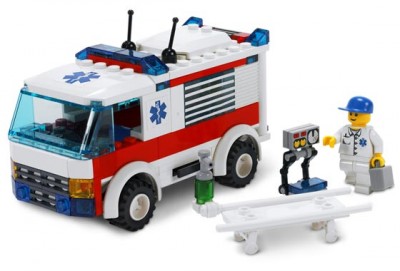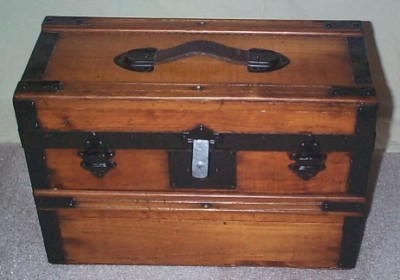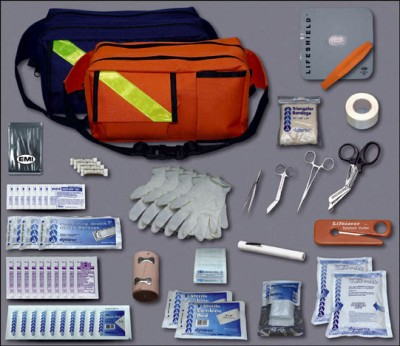One of these days, we’ll have to do a comprehensive post on care and feeding of the multi-wheeled chariot we call the “waaambulance.” For the time being, however, here are a few morsels that most people don’t figure out until they’ve been in the business for a few months at least. These apply mainly to any Type II (van) or Type III (van cab with box module) ambulance based on the Ford chassis, although they may have some application to other vehicles as well.
- If you turn the ignition key too far, it may get stuck slightly past the “on” position, in which case most of your vehicle electronics (FM radio, air conditioning, etc.) will not work. It’s not broken; just turn it backwards slightly.
- In a similar vein, you may occasionally find that after switching off the power, your key is trapped in the ignition. Give the gearshift a wriggle while turning and pulling at the key. Jiggle the steering wheel too.
- Lock yourself out? For shame. On many Type II (van) units, there’s an easy solution: unscrew your antenna (either the FM antenna or a stout two-way) and head to the back doors. The leftmost of the two lights above the license plate should be easily removable, and you can poke the antenna up into the gap and use it as a probe to “lift” the base of the locking post. Then open the sucker up and unlock the rest using the electronic switch (or just climb through to the cab). Of course, your service may also have installed an emergency unlock button somewhere hidden, but you should hopefully know about that…
- The knob that you pull to activate the headlights has another function. If you twist it while it’s in the “on” position, it will adjust the brightness of your dashboard console (including the LCD radio display and the lights behind the dials); give this a try if your radio seems inexplicably dim. And if you turn it all the way to the left (it will click), it’ll usually activate the overhead light.
- If you have a digital odometer, there should be a button beside it that cycles through your tripometers and resets them. If the ignition is off and you need to retrieve the odometer mileage for paperwork, you don’t need to turn the key; just press this button and the display will light.
- If you have a “momentary” switch that disables the backup alarm (rather than one that can be switched off permanently), you can hold it down while shifting into reverse (you may have to shift left-handed) in order to avoid any beeping; this is a nice courtesy to avoid deafening your partner if they’re back there spotting you. Otherwise you’ll usually let out at least one beep before you can hit the switch. Once you’ve shifted you can let it go.
- The newer gasoline vans have a third “cigarette lighter” charging port located inside the glove compartment.
- Diesel vehicles can safely be fueled while the engine is running. There’s no need to shut down and kill the AC and everything else. I would not, however, try starting the engine while fueling it.



Recent Comments